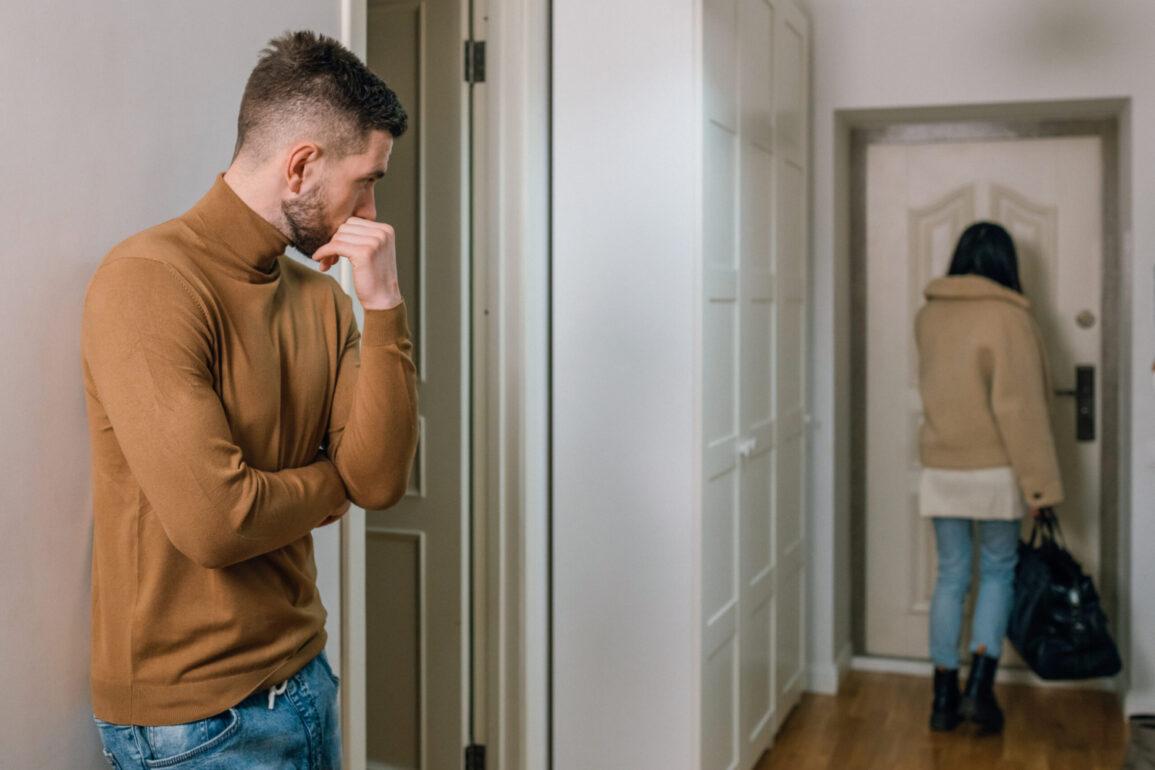She sat across from him, arms crossed tight. He glanced at his phone, jaw clenched. They weren’t fighting—not yet. But the air between them was thick with something worse: that familiar, suffocating distance. I’ve seen this play out too many times.
People trapped in this cycle don’t need more “relationship advice.” They need to know how to escape the anxious-avoidant trap—before it rewires their entire understanding of love.
I’m Claire Delli Santi, a relationship dynamics expert and senior editor at Sons of Universe. And today, we’re breaking down exactly why anxious and avoidant partners keep finding each other—and how to finally stop repeating history. Oh, and that couple? Their story didn’t end how you’d expect.
And, if you’re questioning why certain relationship dynamics keep repeating, understanding different relationship types might give you the clarity you need.
Key Nuggets
- Your attachment style isn’t random. It’s a script written by childhood experiences and past relationships—without you realizing it.
- You’re not asking for “too much” or “too little.” The real battle? Misunderstanding each other’s emotional survival strategies.
- Love isn’t lost, it’s patterned. If you keep repeating the same relationship issues, you’re likely stuck in attachment reenactment.
- Love isn’t a chase—it’s a rhythm. Shift the pattern, and suddenly, the avoidant leans in instead of pulling away.
Anxious Attachment and Avoidant Attachment Styles: What are they?
Your attachment style describes how you interact with the people you care about the most: your best friends, close family, and your partner. A secure attachment style is shared by around 50% of the population. The others use one of the insecure attachment styles1.
There are three types of insecure attachment styles: anxious, avoidant, and disorganized.
Your attachment style is heavily influenced by how you were treated as a youngster. Children rely on the adults in their lives to protect them and teach them about the world.
You may have developed a secure attachment style if your parents and close adults were responsive to your needs and always available for support and reassurance. You may have developed an insecure attachment style if they weren’t (for whatever reason).
An anxious attachment style is an insecure attachment style in which you require support, affection, and reassurance. An anxious attachment style does not trust that others will be there for them. They are afraid of being rejected and seek solace from others.
Avoidant attachment is the other major insecure attachment style. If you have an avoidant attachment style, you believe that you cannot rely on others and hence try to distance yourself from them. You distance yourself from others and avoid close emotional relationships.
Disorganized attachment is extremely unusual and usually results from neglect or abuse. To address the issues of a disorganized attachment style, it is usually required to work with a skilled expert.
What Exactly Is the Anxious-Avoidant Trap?
A common relationship pattern called the anxious-avoidant trap can be hurtful for those involved. It occurs when one person in a relationship has an anxious attachment style while the other has an avoidant attachment style.
Such combinations may seem unusual, but they are actually rather common.
People with an anxious attachment style are frequently drawn to those with an avoidant attachment style, and vice versa.
Some attachment style qualities might be irresistible to the other side, especially at the outset of a relationship.
As an example, an avoidantly attached person might question their partner constantly. It feels like their partner really cares about them and is connected to them to someone anxiously attached. In fact, avoidantly attached people do this to keep their own feelings and thoughts to themselves.
Both parties believe they are on the same page, but they fact have quite different ideas and expectations of the relationship.
Unfortunately, this does not make for easy relationships, particularly as time passes. The two attachment styles oppose each other, intensifying both people’s fears and concerns.
The anxiously attached individual seeks reassurance and consolation from the avoidantly attached individual. As a result, the avoidantly attached person feels pressurized and withdraws in response. When an intensely attached individual notices their partner pulling away, they want to pull closer.
This results in a vicious circle, known as the anxious-avoidant trap.
There are many people who fall into the anxious-avoidant trap, so don’t feel guilty if this describes you.
One of the reasons it’s so widespread is that we’re drawn to what’s familiar, even though we know it’s bad for us. If we’ve had similar experiences in the past, it becomes part of what we subconsciously expect (and perhaps seek) in a relationship.
Just because you’ve fallen into the anxious-avoidant trap previously doesn’t imply you’ll always do so.
Let’s have a look at how we might avoid falling into the anxious-avoidant trap.
Signs of the Anxious-Avoidant Trap
The following are some signs that you are in an anxious-avoidant trap:
- Arguing about nothing – When the anxious partner is unable to obtain the affection and intimacy they seek or detects the avoidant’s withdrawal, they provoke a dispute in order to gain the attention they seek.
- No solutions — not only are there many enormous disputes about minor issues, but there are never any solutions. Addressing the true issue, the relationship, and feeling overwhelmed, is not the avoidant’s nature. They do not want to engage in problem solving because the problem, in their opinion, is the other person.
- More alone time — the avoidant frequently starts fights merely to be further away. The avoidant gets less connected and more aloof as the anxious partner grows more emotional and enthusiastic about healing the relationship, until they can walk away and discover the autonomy they crave.
- The regrets — following the verbal outburst and the avoidant’s departure, the anxious, who may have uttered cruel and hurtful things, feels the loss of the partner and begins to consider all the reasons they need to stay together. At the same time, the avoidant is focusing on the negatives, which increases the urge to avoid the other person.
There is a reconciliation at some point, which may take hours, days, or even weeks. However, the avoidant is already a little further away, prompting the anxious partner to repeat the cycle, resulting in the anxious-avoidant trap.
The cycle lengthens through time, whereas the reconciliation shortens in total duration.
Making Anxious-Avoidant Relationships Work
Relationships between people who have anxious or avoidant attachment styles might be challenging, but that doesn’t mean they can’t work. They can, but both sides will have to work in some effort. This is how.
1) Begin with conversation.
Communication is essential for a good relationship, and this is especially true when there are fundamental disparities in how you both approach relationships.
Instead of avoiding unpleasant matters, strive to have open, honest discussions about how you feel and how you understand each other’s actions. This creates a solid platform for you to work on issue solving.
An anxious attachment style individual will usually find it simpler to express their feelings than an avoidantly attached person. Instead of whining about what your partner is doing, try using I statements and talking about your feelings.
Allow your partner to express their emotions as well. The individual with an avoidant attachment style may require support to discuss the stress they are experiencing.
Take your partner’s sentiments seriously and pay close attention to what they say. The nervously attached individual may find it difficult to comprehend that their partner is under pressure. Their partner may not realize how unsettling a lack of reassurance might be.
Is it a struggle to convince him to spend time with you?
Understanding males on a much deeper emotional level is the key to finding a solution.
With a few subtle comments you might make to him, you can actually modify the main reason why men react in this way.
Learn how to become his top priority in this free video by Relationship Psychologist James Bauer.
2) Emphasize self-reflection
Before we can make significant changes to ourselves and our relationships, we must first comprehend our own ideas and feelings.
Spend some time reflecting on your relationship and the things that are important to you. Journaling may be highly beneficial for self-reflection since it allows you to look back on your previous thoughts and feelings and observe how they change over time.
Look for areas in your self-reflection where you are making assumptions about what others are thinking or feeling. It’s natural to believe, “I know they think x because…” but that doesn’t guarantee you’re correct.
People with anxious and avoidant attachments may reach diametrically opposed judgments about what a certain conduct entails. For example, asking someone to notify you when they arrive home safely is a sign of affection for someone with an anxious style but can feel dominating if you have an avoidant style.
Taking the effort to understand your own and your partner’s assumptions might help you make adjustments in your relationship.
You may like: Cracking the Code: Loving Someone with Avoidant Attachment (Understanding & Navigating the Patterns)
3) Discover your attachment style
Understanding your attachment style isn’t about labeling yourself—it’s about uncovering the patterns that shape your romantic relationships.
Many people, especially those stuck in the anxious-avoidant trap, struggle with recognizing their core attachment style and how it impacts their interactions.
Sure, an attachment style quiz can offer insight, but true self-awareness takes more than an online test. Look at your previous relationships—do you seek constant reassurance, or do you withdraw when things get emotionally intense?
Think about your childhood experiences—were your caregivers consistent, or did you develop attachment wounds early on?
Discussing these insights with your romantic partner can help foster a secure relationship. A relationship therapist or relationship coach can also guide you through understanding your internal attachment models and how to move toward secure attachments in your adult relationships.
4) Make room for one another
f you’re in an anxious-avoidant relationship, the worst thing you can do is assume that space and closeness should be equal at all times. An anxious partner moves toward connection, while an avoidant person instinctively pulls away. Neither is wrong—it’s about learning to meet in the middle.
For an avoidant partner, alone time isn’t rejection; it’s regulation. For an anxious person, reassurance isn’t neediness; it’s seeking a secure connection.
Instead of pushing each other’s attachment system flare, create a plan: If the avoidant attacher needs space, they commit to checking in daily. If the anxious attacher needs reassurance, they practice self-soothing before reaching out.
The goal isn’t to “fix” each other—it’s to build an authentic connection where both needs are acknowledged.
5) Keep in mind that there is no objective ‘wrong’.
One of the biggest obstacles in anxious-avoidant relationships is the belief that one person’s needs are “too much” while the other’s are “too little.”
This isn’t about who’s right—it’s about understanding attachment dynamics.
An anxious attachment type sees love as closeness and validation, while an avoidant attachment style sees love as independence and trust in absence. Both approaches have merit. The real issue arises when partners try to “correct” each other instead of respecting their attachment preferences.
You don’t have to become an entirely different person to make your relationship work. But you do have to make a conscious effort to recognize your partner’s bids for closeness and their need for a bit of space—without labeling either as a problem.
6) Have a large network of support.
One of the challenges in attempting to ‘repair’ an anxious-avoidant relationship is that both parties are under a lot of pressure. Build good ties with the people in your life to give yourself some breathing room.
This could imply having close pals on whom you can rely. If you have close family members, they may be a source of comfort and support for you.
A larger support network can assist someone with an anxious attachment style feel more self-sufficient. You can meet some of your needs through other individuals in your life, which means you are less reliant on your partner.
A larger support network allows you to be yourself if you have an avoidant attachment style. You may feel less suffocated, which may reduce tension in your relationship.
Having a large social network does not mean that you can replace your partner as a source of support. It’s about having the support of your friends and partner. It also provides you with more opportunities to learn to rely on and trust others.
7) Learn to accept tough feelings.
It’s easy to assume that people with secure attachments don’t struggle with emotions like jealousy, fear of abandonment, or rejection. But they do—they’ve just learned not to let those feelings dictate their actions. The difference? They don’t let discomfort define their relationships.
Both anxious attachers and avoidant types develop patterns to escape difficult emotions.
An anxious partner chases reassurance, while an avoidant partner shuts down, avoiding emotional closeness to sidestep the deep pain of rejection. Neither approach works in the long run.
Breaking the avoidant cycle means recognizing these attachment patterns and making a conscious effort to sit with discomfort instead of reacting. Start small—notice your emotions without immediately acting on them. Over time, this practice builds a secure connection that isn’t ruled by fear.
8) Recognize patterns from your past
Your attachment style content isn’t just about childhood—it’s about the habits you carry into adult relationships. The anxious-avoidant cycle thrives on repetition, fueled by unresolved attachment wounds and reactions of internal anxiety.
An anxious attachment type may spiral into anxiety storms, overanalyzing a partner’s behavior, while an avoidant attacher downplays emotions, engaging in silent treatment instead of addressing issues.
If this sounds familiar, don’t just chalk it up to “relationship problems”—this is about your attachment dynamics.
Breaking free requires awareness. Next time you feel triggered, pause and ask: Is this about my partner, or is this my own history repeating?
Small shifts in awareness can stop attachment reenactment before it sabotages your closest relationships.
You may like: Which Attachment Styles Work Best Together? The Most Compatible Matches
9) Attend to your own attachment requirements.
The majority of the advice provided here is intended to assist you in transitioning to a more secure attachment style. If you and your partner work on your individual attachment needs, you will no longer be trapped in the anxious-avoidant cycle. You will be in a safe-safe relationship.
Unfortunately, it does not always work that way. Your partner may not be prepared or able to work on their attachment style at this time. That’s OK.
Despite their best efforts, both sides of the anxious-avoidant trap contribute to the challenging scenario.
You can’t make your partner work on their attachment issues, but you can work on your own.
Making a serious attempt to work a more stable attachment style will affect your relationship.
You will naturally shift the dynamic between you two by changing your behavior. If only one of you gets more secure, you can still escape the anxious-avoidant trap.
Be aware that your partner may not be totally supportive of your adjustments. They may be content with their existing circumstances and struggle when things begin to feel different. Be understanding about it. Moving beyond the familiar, even to a better circumstance, is challenging.
Being sensitive about their distress does not excuse you from working on your own attachment needs. This is beneficial to you as a person and will be useful for the rest of your life.
“I’m sorry this is difficult for you,” try saying. Working on my attachment style is really important to me, and it is already making me feel better about myself and how I interact with the people who matter to me, including you. I’m always available if you have any questions or want to talk about anything.”
Last but not least, keep therapy as an option
Managing attachment concerns can be difficult. You frequently need to unpack childhood preconceptions about yourself and others.
Working with a certified relationship coach or therapist can often make the trip much simpler. They can assist you in recognizing and dealing with some of the thoughts, attitudes, and actions that are contributing to your anxious-avoidant trap.
Couples counselling may be an option if your partner is willing. This could be in addition to or instead of individual counseling.
Whether you work with a coach, therapist, or on your own, be sure you have a strong support network in place and are prepared to seek assistance if necessary.
My Take
Here’s the uncomfortable truth: you don’t just “fall into” the anxious-avoidant trap—you’re drawn into it, like gravity. It feels familiar, almost inevitable, because on some level, it is. But breaking free? That takes something different. You need a plan, not just realizations.
That couple I mentioned? I overheard them at a crowded café, but it was like they were the only two people in the room. She leaned in, searching for connection. He leaned back, arms crossed, scanning the exit. She asked, “Do you even care?” He sighed, checked his phone. A slow-motion crash. I knew how this would go—until she did something unexpected. She didn’t push. She didn’t beg. Instead, she pulled back, met him at his emotional distance, and suddenly, he leaned in.
That’s how you start escaping the anxious-avoidant trap—by disrupting the cycle before it repeats itself.
The problem? Most people can’t do it alone. That’s why I highly recommend Relationship Hero’s online coaching—it’s the fastest, most effective way to break toxic relationship dynamics without the time and financial drain of traditional therapy. Their coaches are brilliant, empathetic, and trained in real, science-backed strategies—not just vague advice.
Because if love keeps feeling like a game of chase, maybe it’s time to change the rules.
FAQs
How can you break the anxious-avoidant cycle?
Breaking the anxious-avoidant cycle usually entails working through some personal attachment issues and learning to be more securely attached. Both parties will have to make concessions. The anxiously attached partner must learn to provide more space, while the avoidantly attached partner must learn to reach out more.
Can avoidant and anxious people coexist?
Yes, but you may have to work at it. These relationships can have a lot of’spark,’ but it takes open communication, respect, and change on both sides. Both persons must work on their own attachment issues and be willing to assist the other person in resolving their concerns.
What exactly is an anxious-avoidant relationship?
There is usually a lot of friction in an anxious-avoidant relationship. You may break up and get back together several times. There is a push-pull feeling, with one person craving more closeness and the other pulling away.
Conclusion
Did you find this list helpful? By escaping the anxiety-avoidant trap, you will be able to find the kind of relationship you deserve; one that will let you thrive
Have you managed to escape the anxious-avoidant trap? Do you have any recommendations? Let us know what you think in the comments. Please spread the word if you found this post useful, especially if you know someone who is locked in the anxious-avoidant cycle.
You think about him all the time, but he thinks only about himself?
It doesn’t mean he doesn’t like you.
He needs to be understood in his own way.
You’ll find there’s a subtle thing you can say to him that will dramatically change how he shows his emotions towards you once you do that.
Learn how to become his top priority in this free video by Relationship Psychologist James Bauer.
Take this simple quiz to find out whether he likes you or not!
You may also like:
13 Little Known Things Happy Couples Do Every Single Day (Almost Unconsciously)




